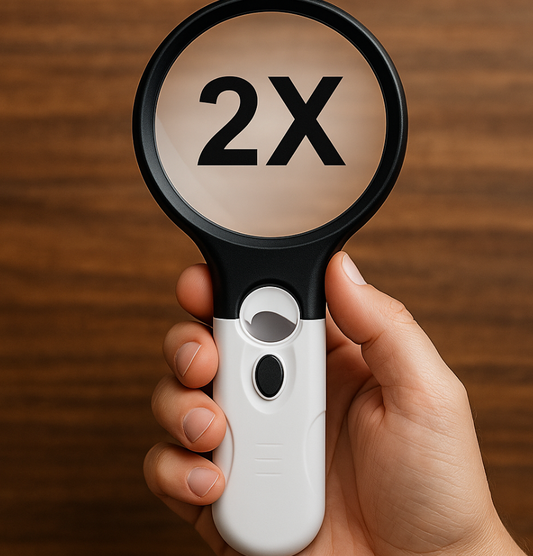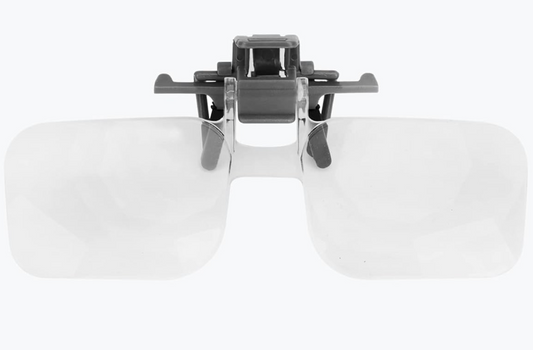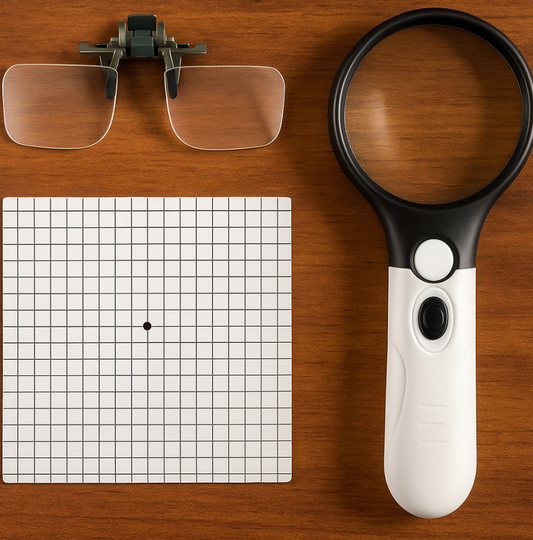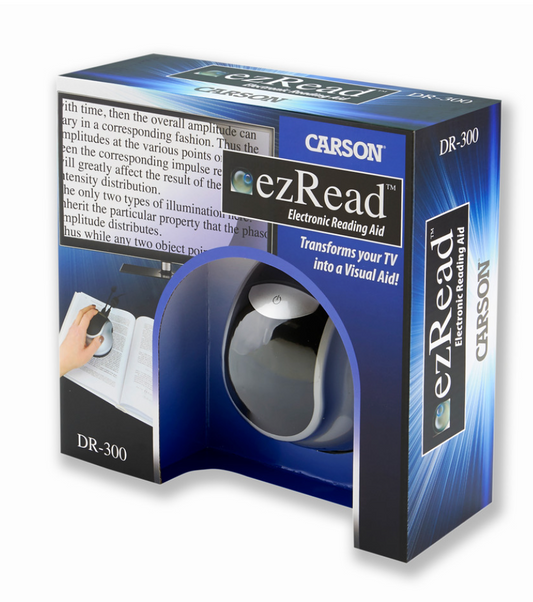How to Use Your Smartphone as a Low Vision Tool
Share
How to Use Your Smartphone as a Low Vision Tool
For individuals with low vision, smartphones are more than just communication devices; they are powerful tools for enhancing daily life. With built-in accessibility features and a wide variety of apps, both Apple and Android devices can help users navigate their environment, read text, and even identify objects. In this blog post, we’ll explore how to use your smartphone as a low vision tool, focusing on built-in features and apps available for iOS and Android devices.
Built-In Accessibility Features
For Apple Devices (iOS):
Zoom
- Apple’s Zoom feature allows you to magnify your screen, making it easier to read small text or view fine details.
- How to Enable: Go to Settings > Accessibility > Zoom and toggle it on.
- Tip: Use the three-finger double-tap to activate or deactivate Zoom quickly
VoiceOver
- VoiceOver is a screen reader that describes what’s on your screen, from app names to on-screen buttons.
- How to Enable: Go to Settings > Accessibility > VoiceOver and toggle it on.
- Tip: Customize gestures in the VoiceOver settings to make navigation easier
Magnifier
- The built-in Magnifier app uses your phone’s camera to enlarge objects or text.
- How to Use: Triple-click the side button (or home button on older devices) to activate.
- Find a step by step demo on YouTube - How to Turn Your iPhone into a Magnifier
- Bonus Feature: Use the flashlight within Magnifier for better illumination.
Display Adjustments
- Customize text size, bold text, and contrast to make your screen easier to read.
- How to Adjust: Go to Settings > Accessibility > Display & Text Size to explore options like increasing contrast and reducing transparency.
For Android Devices:
Magnification
- Android’s Magnification tool allows you to zoom in on specific parts of the screen.
- How to Enable: Go to Settings > Accessibility > Magnification and turn it on.
- Tip: Use gestures like triple-tapping the screen to zoom in or out.
TalkBack
- TalkBack is Android’s screen reader, which provides spoken feedback for everything on the screen.
- How to Enable: Go to Settings > Accessibility > TalkBack and toggle it on.
- Tip: Familiarize yourself with gestures to improve navigation efficiency.
High Contrast Text and Colors
- Adjust text and display settings for better visibility.
- How to Adjust: Go to Settings > Accessibility > Text and Display and explore options like bold text and high contrast.
Accessibility Shortcut
-
-
Quickly access key accessibility tools like Magnifier or TalkBack using a shortcut.
-
How to Enable: Go to Settings > Accessibility > Accessibility Shortcut to customize.
-
Top Apps for Low Vision Users
For iOS and Android:
Seeing AI (iOS Only)
- Developed by Microsoft, this app narrates the world around you, identifying objects, text, and even people.
-
Features:
- Text recognition (including handwriting).
- Object identification.
- Barcode scanner for product details.
- Currency identification.
Google Lookout (Android Only)
- Similar to Seeing AI, this app identifies objects, text, and even currency through your camera.
-
Features:
- Quick Text Mode for reading signs or labels.
- Food Label Mode for identifying packaged goods.
- Explore Mode for navigating environments.
Be My Eyes (iOS and Android)
- Connects users with sighted volunteers who provide assistance through live video.
-
Best For:
- Identifying items.
- Reading labels or instructions.
- Navigating unfamiliar spaces.
Magnifying Glass + Flashlight (iOS and Android)
- Turns your phone into a powerful magnifying glass with a built-in flashlight for low-light conditions.
-
Best For:
- Reading menus, small print, or labels on the go.
KNFB Reader (iOS and Android)
- A highly accurate text-to-speech app that reads printed text aloud.
-
Best For:
- Reading books, mail, or documents.
Voice Dream Reader (iOS and Android)
- An audiobook and text-to-speech app that can read PDFs, Word documents, and eBooks aloud.
- Features: Adjustable voices, speeds, and text highlighting for easy reading.
Aira (iOS and Android)
- A subscription-based service that connects users with trained agents who assist with real-time navigation, shopping, and more.
-
Best For:
- Independent navigation and complex tasks.
Envision AI (iOS and Android)
- Uses AI to describe surroundings, read text, and identify objects.
-
Best For:
- Reading signs, identifying people, and navigating unfamiliar environments.
Practical Tips for Using Your Smartphone
Keep Your Phone Charged
Accessibility features and apps can drain your battery quickly. Carry a portable charger to ensure your phone is always ready to assist you.
Use Headphones
Use headphones for apps with audio assistance, like VoiceOver or TalkBack, to ensure privacy and avoid distractions.
Larger headphones provide better sound quality and are easier to find than airpod style headphones
Practice Using Apps
Spend time exploring and familiarizing yourself with accessibility apps before relying on them in daily life.
Enable Voice Commands
Use Siri or Google Assistant to control your phone hands-free. For example, say, “Hey Siri, open Magnifier” or “Hey Google, read my messages.”
Customize Shortcuts
Set up shortcuts for frequently used accessibility features to save time. For example, triple-press the side button to activate VoiceOver or Magnifier.
Conclusion
Your smartphone is a powerful tool for improving daily life with low vision. Whether you’re using built-in features like Magnifier and VoiceOver or leveraging advanced apps like Seeing AI and Be My Eyes, there are countless ways to enhance your independence and accessibility. Take time to explore these tools, customize settings, and integrate them into your daily routine. With the right apps and features, your smartphone can become an indispensable companion in navigating the world with confidence.
What are your favourite low vision apps or tips for using a smartphone? Share them in the comments below!



